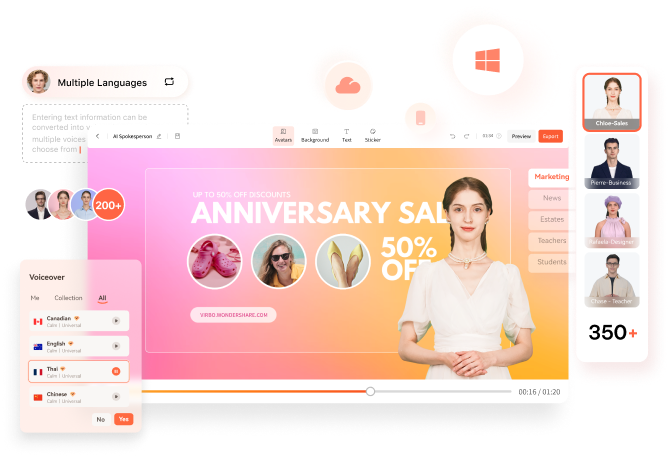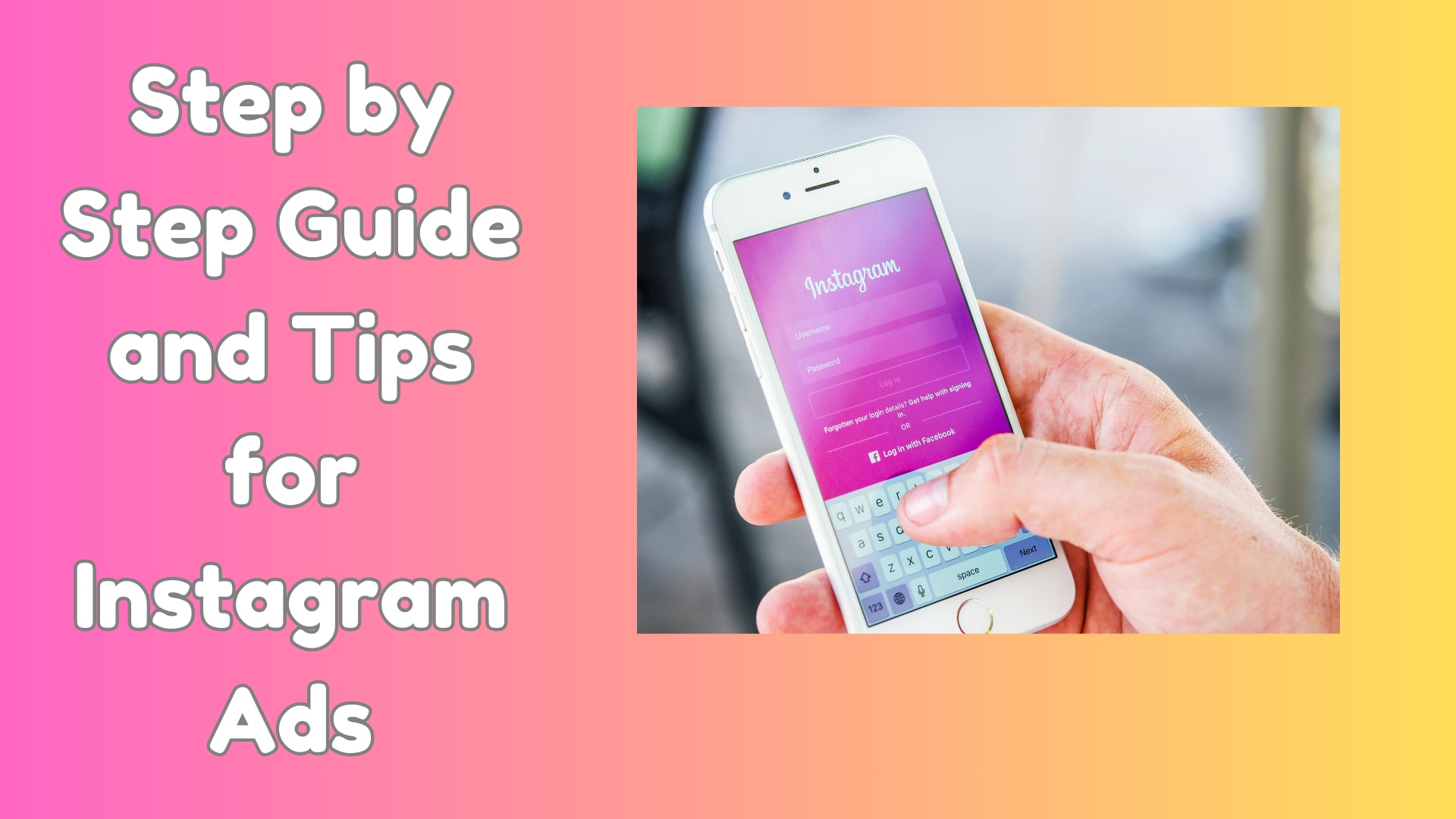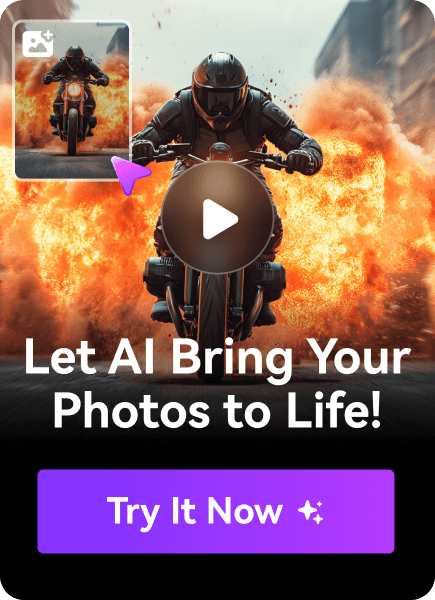Finding it hard to build your brand in the digital marketplace? With millions of businesses competing for attention, playing with traditional methods of organic reach is like shouting in a wind tunnel. The good news? Social media ads are a great way to reach your target audience because their approach to targeted advertising shines.
As buyer attitudes continuously evolve, social media advertisement helps increase visibility and target demographics and interests. Imagine reaching clients who want exactly what you have to sell. Social media advertising is another opportunity to increase brand exposure, meaningful engagement, and conversions.
Let's take a look into how social media advertising may impact your business in 2024.
In this article
Part 1: What is Social Media Advertising?

Social media ads, like television commercials, are paid ads displayed on platforms like Facebook, Instagram, LinkedIn, and Twitter, helping businesses and brands reach their target audience. These ads can be in a video, aka reel, image-based, or carousel forms. These ads target users based on their hobbies, behaviors, and demographics.
Social media advertising comes with valuable benefits. Statista says that by 2029, global spending on social media ads will hit $345 billion, highlighting why starting social media advertisement is essential. Approximately 5.17 billion people are using social media worldwide. Because of this, firms have a massive potential customer base to target with quality.
Companies can easily adjust their campaigns based on minor details like CTR and conversion rates. Did you know that the average cost per click on Facebook is $0.97? A great budget-friendly option in comparison to the traditional ads.
It is a quick yet short-term way for a comprehensive online strategy. Businesses aiming for ROI may recognize the value of social media marketing, aligning with user behavior.
Part 2: How Does Social Media Work?

Social media platforms allow users to create, share, and interact with content. They enable people, brands, and communities to communicate with each other. Social media is based on user-centered content and algorithms that personalize the user experience to what they do, like, and engage in.
It also provides an engaging platform for businesses to promote themselves, offering organic reach and paid ads. Now that you know how social media works, let's take a look at the key components of social media ads.
Key Components of Social Media Ads
1. Campaign Objectives
Any ad campaign needs clear objectives. The main goal could be traffic generation, lead generation, brand awareness, or sales. These clearly define what the ads would be compared against.
2. Target Audience
With social media, businesses can target their ads for a specific audience, depending on age, interests, and other actions. For example, Facebook and Instagram provide detailed options where your ads will reach those potential customers who would most probably interact with them.
3. Ad Creation
The creative process involves developing engaging content to capture your audience's interest. Ad creation depends on what type of ad you want to showcase, your budget, and your long-term goals. For instance, your budget will decide whether to hire a professional production team, freelancers, or AI ad-generation tools.
If you're low on budget and want to create reel/video ads, Wondershare Vibro is an AI video generator that offers various options. Consider you have clicked some great snapshots of your product. Now, take it to Virbo’s AI montage maker, you can make a full ad with the script. You can edit it by giving a few simple prompts.
It is not an issue, even if you don't have product snapshots. Virbo’s URL-to-video maker can simply convert the URL of your product or service and create a video ad for your product.
4. Budget
You could set daily or campaign-based budgets to measure how much you're spending on ads. With platforms like Facebook and Instagram, businesses could run ads with minimal investment that would be continually optimized for the best returns.
5. Analytics
After launching a campaign, monitoring its performance through metrics such as CTR, engagement, and conversions is essential. Social media platforms offer detailed analytics of your ads' performance, giving you a platform to adjust your strategies for better outcomes.
Part 3: When Should You Consider Running Social Media Ads?

When goals are clear, (be it people engagement, increasing website visitors, getting leads, or growing sales), businesses should start using social media ads. Ads are especially effective when the organic reach is low, or you need to broaden your target audience. They can also help promote business events, like product launches or short-time discounts.
Businesses market on social media to get more attention, learn about their audience, and raise brand awareness. Social media ads let businesses target users with alternative formats (pictures, videos), and gather data for future campaigns. For example, Instagram and Facebook ads have polls and engagement features that help companies determine their customers' needs and desires.
By targeting users at different stages of the buying journey, marketers can divide their audiences into groups, make their brands more visible, and get a higher conversion rate. Ads can be customized for different platforms and formats, supporting brand storytelling and achieving marketing objectives.
Cost of Running Social Media Ads
The cost of ads on social media can differ depending on the platform, such as Facebook, Instagram, LinkedIn, and TikTok, the target audience, and the ad's purpose. Here is a rundown of the social media ads costs according to the platforms and the type:
- Cost per Click (CPC): The cost-per-click for Facebook and Instagram is usually between $0.50-$2.00 click or up to $5.00-$8.00 for clicking to LinkedIn, considering it has business-oriented readers. TikTok's CPC is relatively inexpensive, at $0.10-$1.00 compared to other apps.
- Cost per mille (CPM) (1,000 impressions): Facebook and Instagram average costs around $5–$15 for CPM, while TikTok's average is $3–$10. On the other hand, LinkedIn costs about $6.59.
- Cost per Engagement (CPE): For Facebook and Instagram, it costs between $0.01-0.08 per engagement. It can be a like or comment. Meanwhile, for LinkedIn, it's different, which is between $0.26- $0.50 per send for sponsored in-mail campaigns.

Part 4: Types of Social Media Ads
Today, social media advertising provides businesses with the perfect mixture of ad formats to target audiences across platforms like Facebook, Instagram, and TikTok. Such ad formats offer flexibility to launch effective campaigns with high conversion rates for a brand.
1. Image Ads

Source: https://later.com/blog/create-social-media-ads/
Image ads are basic but effective, having a static picture and a strong call-to-action (CTA) like Shop Now or Learn More. These ads work best for Instagram, Facebook, and Twitter, where visual appeal can quickly capture attention and drive engagement. They're commonly used to promote specific products, events, or special offers.
2. Video Ads

Source: https://later.com/blog/create-social-media-ads/
Video is one of the most effective ad formats for 2024. Its lively blend of visuals and audio grabs the audience's attention. These ads range from six seconds on TikTok to more in-depth on YouTube or Facebook. Video ads are powerful for showing off products, sharing tutorials, or telling your brand's story. Video content tends to grab users' attention more than static content. People are generally more inclined to like or comment on video posts.
Mass video content creation is highly time-consuming, yet with tools like Virbo, AI is making that easier for businesses. Virbo automates many tasks such as video editing, script generation, and customization templates, saving businesses time and effort. With such tools, companies can achieve high-quality videos in less time and resources, meeting the ever-increasing demands of video content on social media.
3. Carousel Ads

Source: https://conversionlogix.com/blog/carousel-ads-vs-single-image-apartment-ads/
Carousel ads are perfect for displaying several images or videos under a single ad. This ad format is ideal for promoting more than one product, telling a story or experience through multiple slides, or showing off different features of the same product. So, each slide may have its link, letting users drill down deeper into your product offers.
4. Stories Ads

Source: https://buffer.com/resources/social-media-advertising-guide/
Stories ads are full-screen and vertical. They appear between user-generated content on Instagram and Facebook. These interactive ads only last 24 hours, making them perfect for time-sensitive promotions. As it is an immersive format, users are locked in when engaging with the content, creating more engagement.
5. Playable Ads

Source: https://www.most2414.com/playable-ads-facebook/
A playable ad allows users to interact with a product or app demo before purchasing or downloading it. This format is viral in gaming but can be applied to any interactive product or service, giving users an experience.
Part 5: How to Get Started With Social Media Advertising?
Social media advertising launched in 2024 requires a mix of strategic planning, creativity, and data-driven insights. Here is the step-by-step guide to help you navigate the process effectively.
1. Define Your Goals
Begin with well-defined objectives. Your focus should be on achieving goals such as increasing brand awareness, driving website traffic, generating leads, and increasing sales. Ensure the objectives are specific, measurable, and aligned with your company's vision. For example, if your target is to increase sales by 20% in the next quarter, your campaign and planning should align with the goal.
2. Define your Target Market
Once aware of your goal, your next concern should be who you are selling to and who your ideal customer is. Use tools like Google Analytics and social platforms to dig into demographics, interests, and behavior patterns. Once you define your target audience, targeting ads will be much simpler and more manageable, increasing the chance of boosting sales and bringing conversions.
3. Choose the Right Social Platforms
Depending on your campaign objective, choose the right social media platform, as each has its unique advantages. For example, Instagram is best for visual storytelling, LinkedIn is best for B2B marketing, and TikTok is best for reaching creative, younger demographics. Analyze where your audience engages the most and combine that with the objective of your campaign.
4. Develop Your Campaign Content Strategy
Create engaging content that speaks to the goals of your campaign. There are images, videos, blog posts, and interactive content. It has to reflect your brand values while talking to the needs and preferences of your audience. Tools like Canva can be used for design, and AI platforms such as Virbo for video-making can make producing content easier and creating high-quality visuals and videos without requiring many human resources.
5. Create a Content Calendar
Organize your content into a calendar to maintain consistency and optimize posting times. This schedule will keep your campaign on track and ensure regular engagement with your audience. Social media management tools like Hootsuite or Buffer allow you to schedule posts and track performance metrics from a centralized dashboard, making the process more efficient.
6. Engage with your Audience
Engaging with your audience brings brand loyalty. Respond to their comments, answer their questions, and join some of the conversations that bring attention to your products and brands. These interactions add a human touch to a brand while offering insights into consumer desires and wants.
7. Monitor and Optimize Your Campaign
It doesn't end once you launch your campaign. Keep tracking your key performance indicators, such as engagement rate, click-through rates (CTR), and return on ad spend. Monitor your performance using analytics data tools, and change your strategy for better results.

Part 6: Best Platforms and Practices For Social Media Advertisement
Businesses largely depend on Facebook, Instagram, YouTube, and TikTok in social media advertising. Each has different advertisement formats, user demographics, and pricing models.
1. Facebook

Best for: Wide targeting and lead generation purposes.
- Available ad types: Image Ads, Video Ads, Carousel Ads, Lead Ads.
- Pros: Facebook owns powerful targeting tools that target specific demographics, interests, and behaviors. It also offers small businesses low-priced ad options and access to a new marketplace called Facebook Marketplace.
- Cons: This medium restricts organic reach, and paid promotions must be seen. However, at times, the ad approval policies delay the campaigns.
- Cost: The average cost of Facebook ads ranges from $0.50-$2.00 per click in most industries and advertising objectives.
2. Instagram

Best for: Visual storytelling and e-commerce.
- Ad types: photo ads, video ads, carousel ads, and shopping ads.
- Pros: Highly visual platform with direct shopping tools, Instagram ads are highly performing for reaching the younger audience. Also, having an integrated Ad Manager for Facebook makes it easy to administer the different ads.
- Cons: You will need quality graphics because of high competition. Ad fatigue can be problematic if the same ad is exposed multiple times.
- Cost: The cost for the Instagram ad depends on pay-per-click, meaning that one pays $0.20 – $2.00 per click or $5 – $6 per 1000 impressions.
3. YouTube

Best for: Video content and brand awareness.
- Ad types: Video ads- Video skippable, video non-skippable ones, display ads, and bumper ads.
- Pros: It is more suitable for a video-centric format because it is specifically suited for storytelling, tutorials, and product demonstrations while having the SEO benefits of being part of Google.
- Cons: More expensive investment in video production. It may have reduced visibility with ad blockers.
- Cost: YouTube ads cost $0.10 – $0.30 per view, depending on the targeting and quality of the video content.
4. TikTok

Best for: Short-form video content targeting a young audience.
- Ad types: In-feed ads, branded hashtags, and branded effects.
- Pros: TikTok is gaining popularity rapidly among Gen Z, and creative tools like Duet or Stitch encourage interactions and user-generated content.
- Cons: It costs more, and one has to spend at least $50 per campaign per day and $20 for an ad group. It is a video-only product, and ads cannot be as diverse.
- Cost: TikTok ads are pricier, usually starting at around $10 for every 1000 impressions.
Social Media Advertising Best Practices
If you want to make the most of your social media advertising and get great conversions without breaking the bank, here are some best practices to keep in mind:
- Define Your Target Audience: Being audience-specific allows you to target exactly who will be the most appropriate audience for your messages. It is where you ensure your ads are for the people most likely to respond to your message.
- Set Definite Goals: Define measurable, specific objectives for your campaign, brand awareness, lead generation, or sales. This will guide your ad strategy and measure success.
- Use Brilliant Visual Elements: Captivating images and videos helps trigger engagement. Your creativity has to fit your brand and resonate with the audience.
- Write Catchy Ad Copy: Your brand deserves a simple, concise, persuasive copy with a clear call to action for many clicks. Get people to click links, sign up, or buy.
- A/B Test Your Ads: Test different formats, visuals, and copy to determine what best executes for your brand. Regular testing ensures the optimization of your campaigns and increases the return on your investment (ROI).
- Monitor and Tweak: Monitor your campaign metrics continuously. Based on the insights received, refine your strategy and reallocate your budget to high-performing ads.
Wrapping-Up!
Social media ads offer a golden opportunity for businesses to boost their visibility, reach their ideal audience, and turn them into customers. Connecting with an engaging audience can benefit from using platforms like Facebook, Instagram, YouTube, and TikTok. Also, AI tools like Virbo simplify video production and content creation, leading to improved conversion rates.
Companies can maximize campaigns for success by following best practices and analyzing performance in this competitive digital environment. Advertise smartly to boost conversions while staying in your budget limits.





